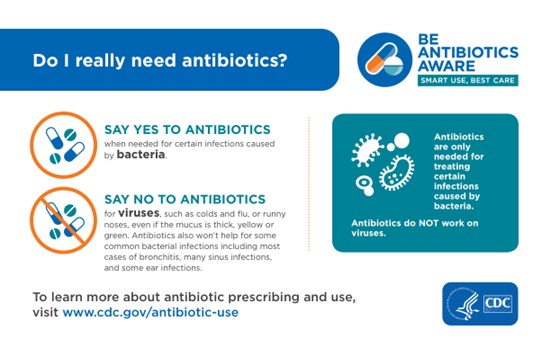
The purpose of this toolkit is to help nursing homes create or maintain an antimicrobial stewardship program. The intended audience is nursing home leadership and all staff involved in antimicrobial stewardship.
The term “antimicrobial” refers to all anti-infectives, including antibiotics, antivirals, antifungals, and antiparasitics. Most antimicrobial stewardship programs focus initially on antibiotic use but should broaden their scope to promote safe and optimal use of other anti-infectives as their programs advance.
The Washington State Department of Health’s Antimicrobial Stewardship team welcomes feedback on enhancing this toolkit. Please email ams@doh.wa.gov with suggestions.
Getting Started
- Antimicrobial Stewardship Toolkit Checklists (PDF)
Checklists that provide practical step-by-step guidance to building a stewardship program.
Sample Stewardship Policy
- Washington Sample Antibiotic Stewardship Policy for Long-Term Care Facilities (PDF)
Policy template to assist facilities implementing a stewardship program. Modify as per institution policies and procedures. - Appropriate Use Criteria for Fluoroquinolones and Clindamycin (PDF)
Criteria to provide guidance for best use of these antibiotic classes in a facility. This is also included in the sample stewardship policy file. This can also be used as a provider education.
Sample Provider Letter Template
- Letter to Providers Template (Word)
Letter template designed to assist facilities with introducing providers to the facility’s stewardship program. Modify as per institution policies and procedures.
Staff Orientation Packet
Resources that can be implemented as part of facility staff orientation processes.
- Communicating with Residents and Families About Antibiotics Online Activity
Free continuing education activity designed to support communication around antibiotic use in the nursing home setting. The audience is nurses and medical assistants. - Educational Modules for New Nurses
- Educational Modules for New Nursing Assistants
Provider and Pharmacist Education
- See Education section of the WA DOH Nursing Homes website
Clinical Tools
- MN DOH’s 72-Hour Antibiotic Time-Out Checklist
Checklist designed to support clinical staff in performing an antibiotic time-out - Sample SBAR Tool for Suspected Urinary Tract Infection (UTI) (Word)
Tool designed to support clinical staff in communicating suspected UTIs to a provider.
Tools for Tracking Antibiotic Use
- MN DOH’s Infection and Antibiotic Use Tracking Tool
Tracking tool designed to assist facilities who are manually tracking their antibiotic data
Resident and Family Educational Materials
Resources to post or to give to residents and families as a part of new resident orientation or when education is needed.
Handouts
- CDC’s Do You Need Antibiotics Brochure
- UTI Educational Pamphlet for Residents and Family Members (English)
- UTI Educational Pamphlet for Residents and Family Members (Spanish)
